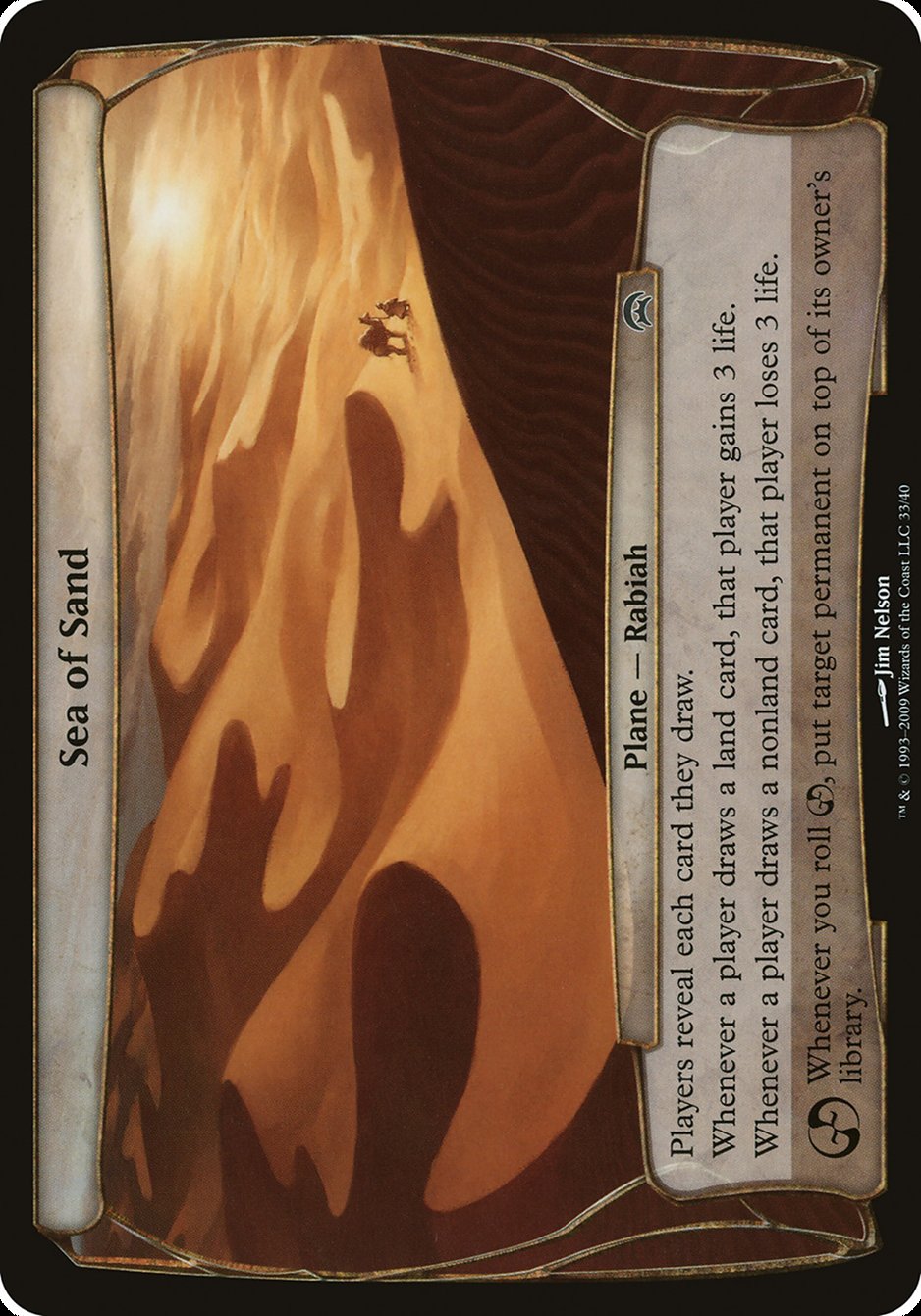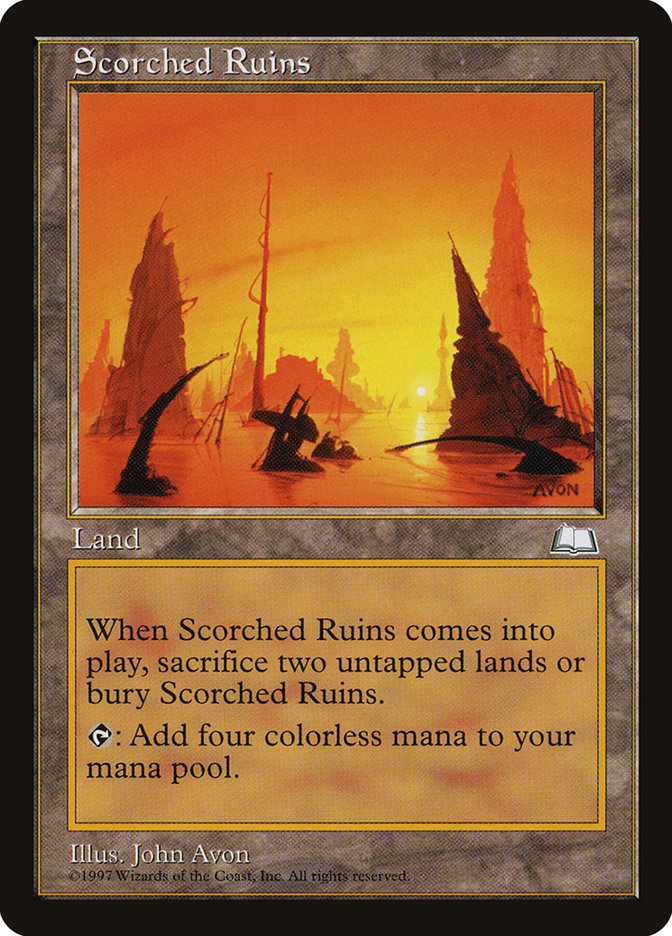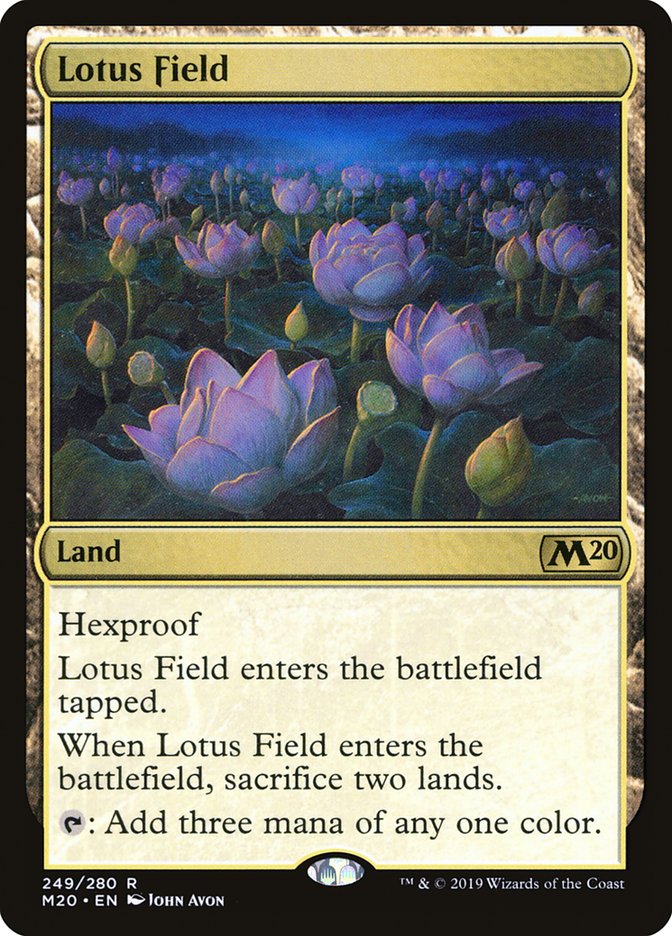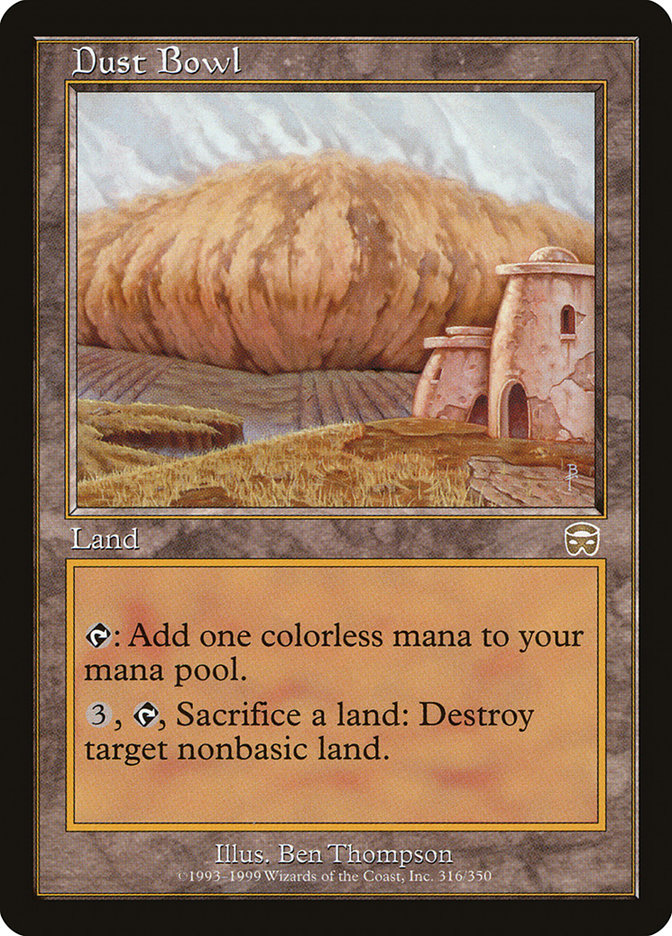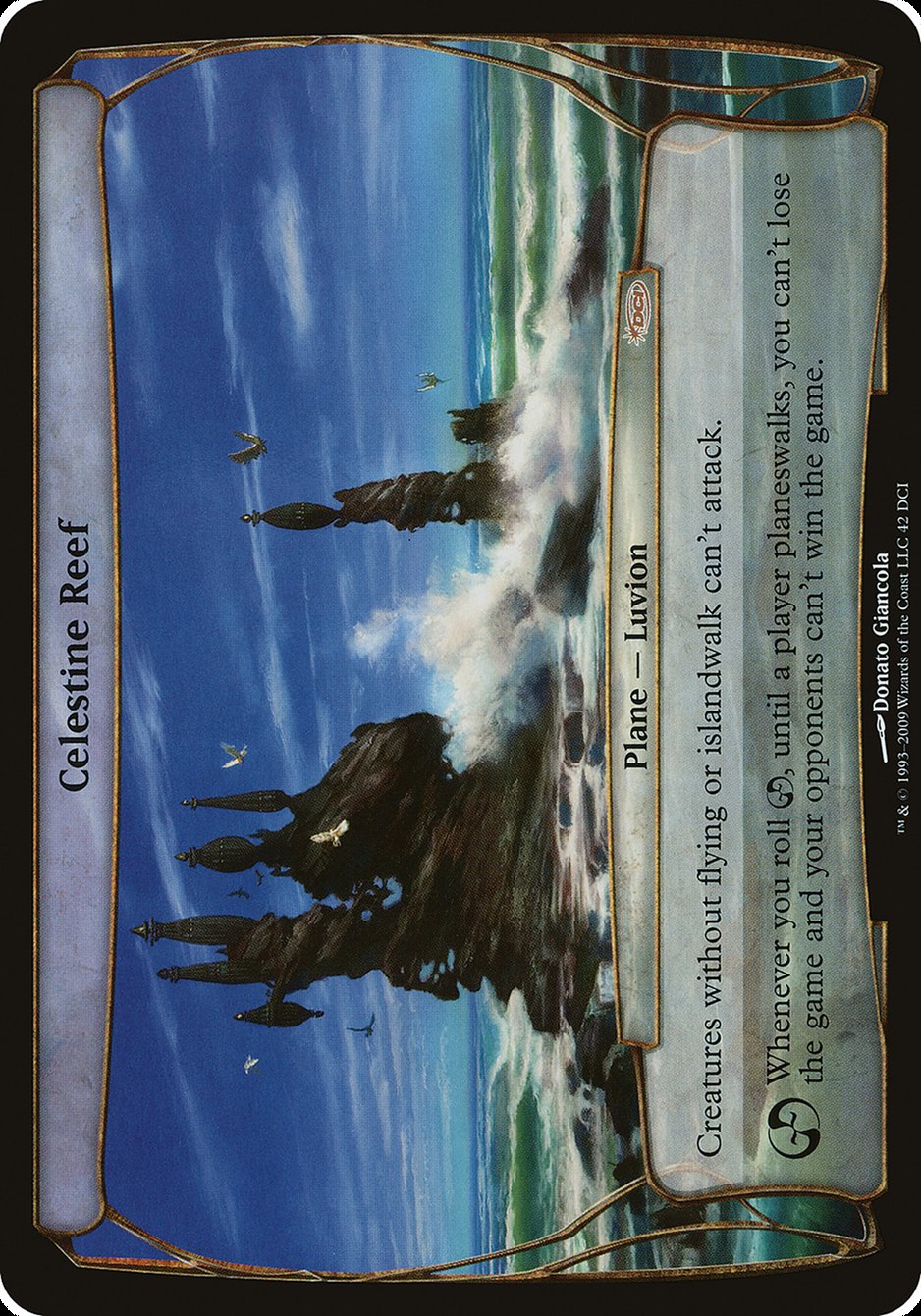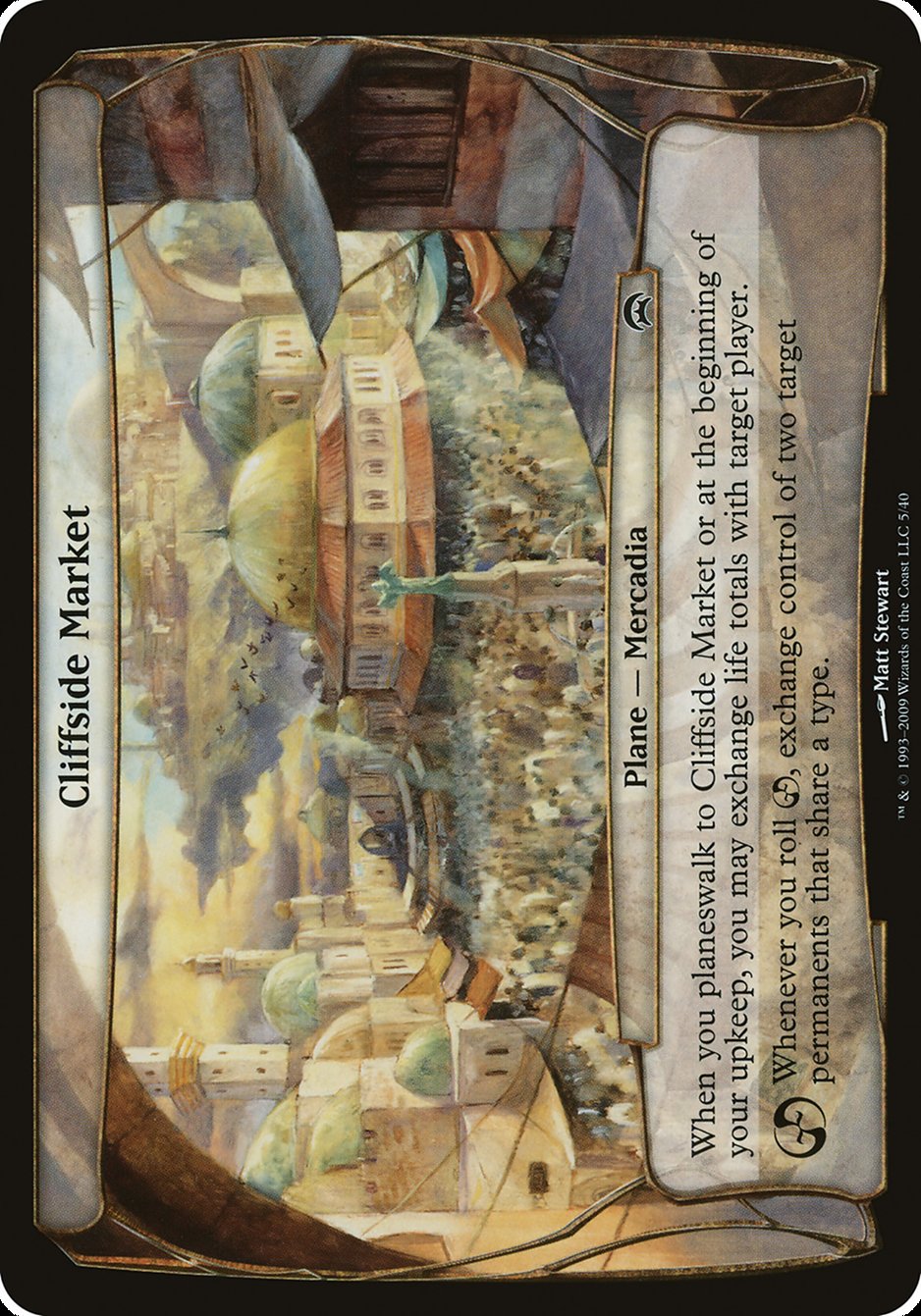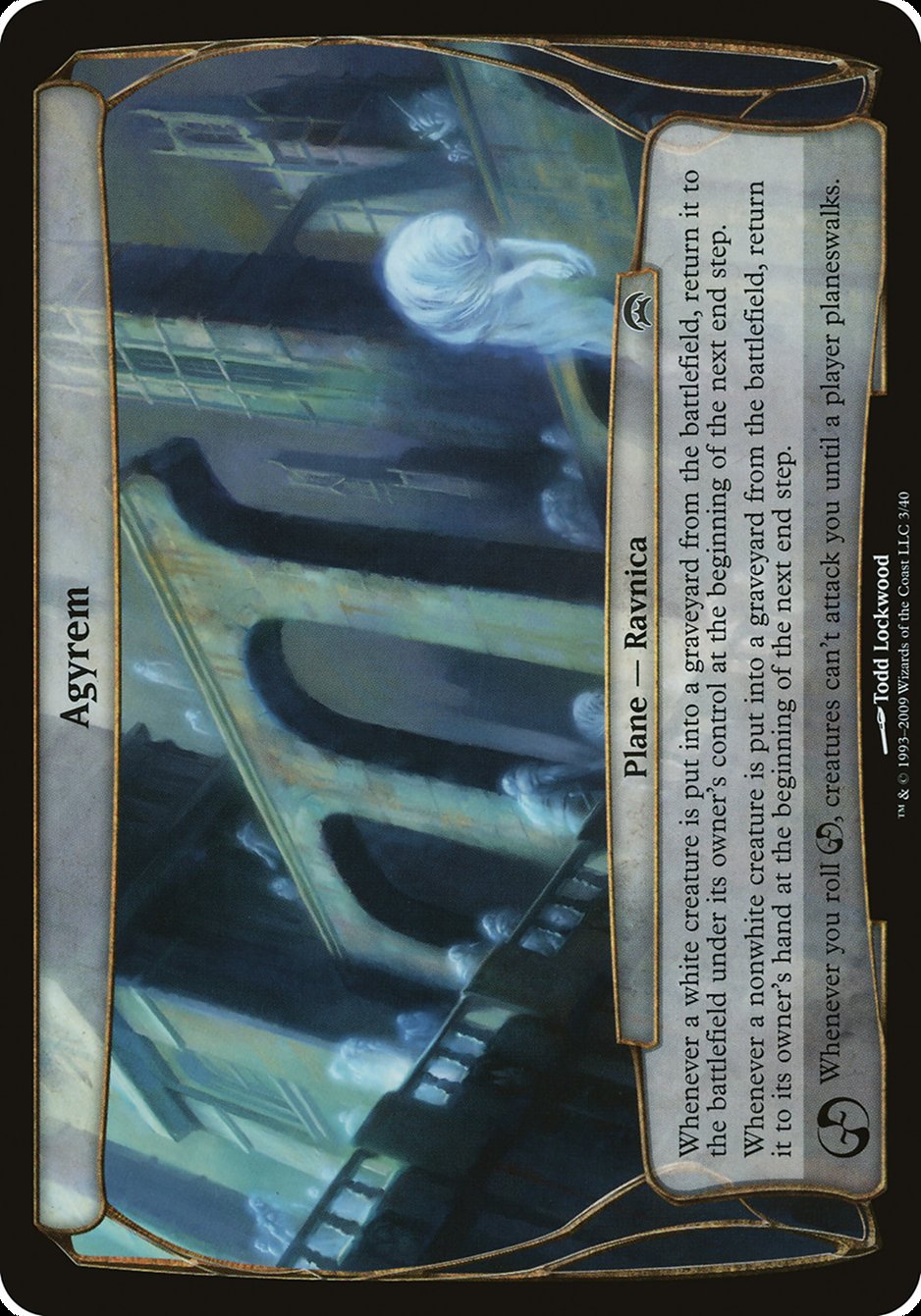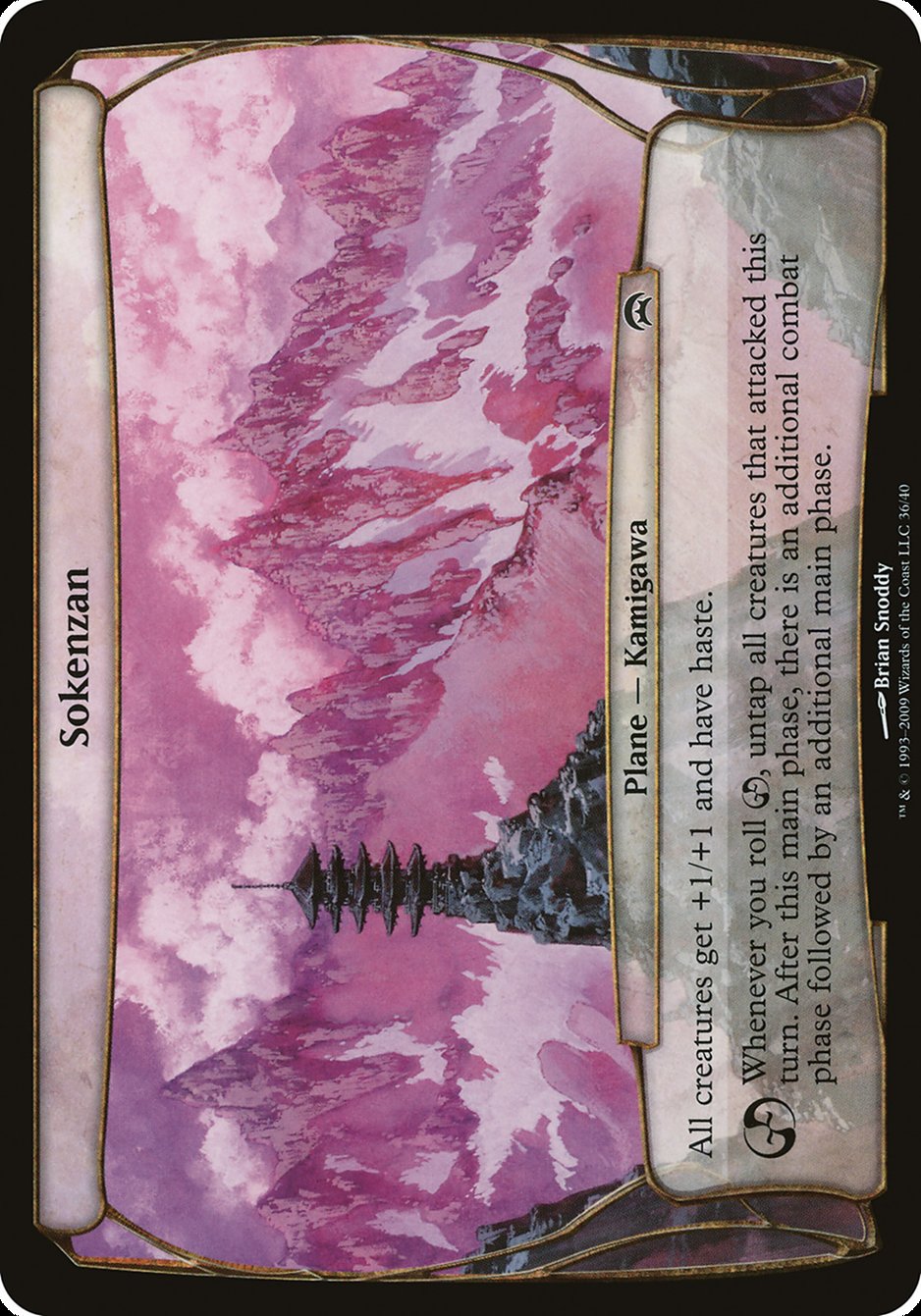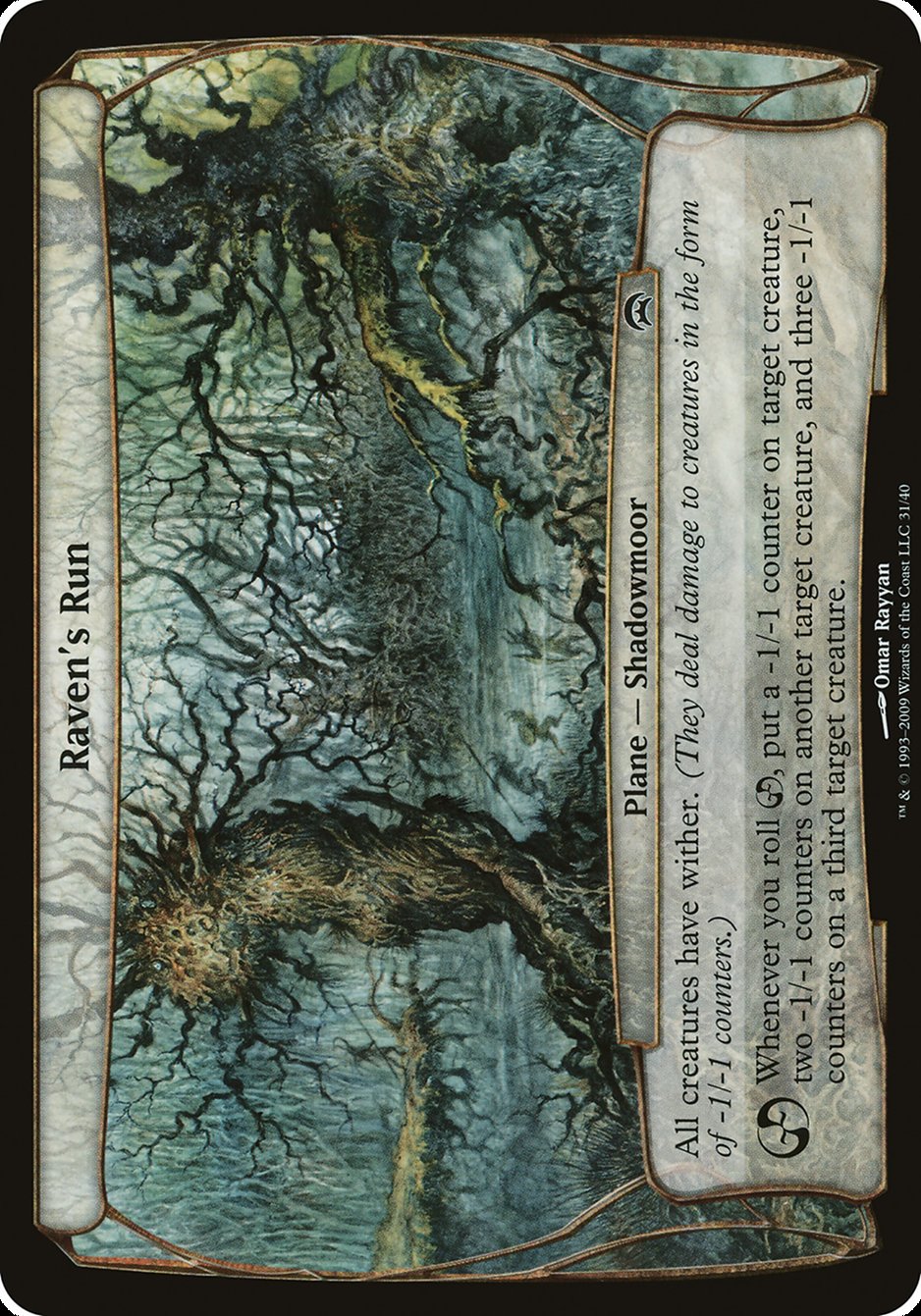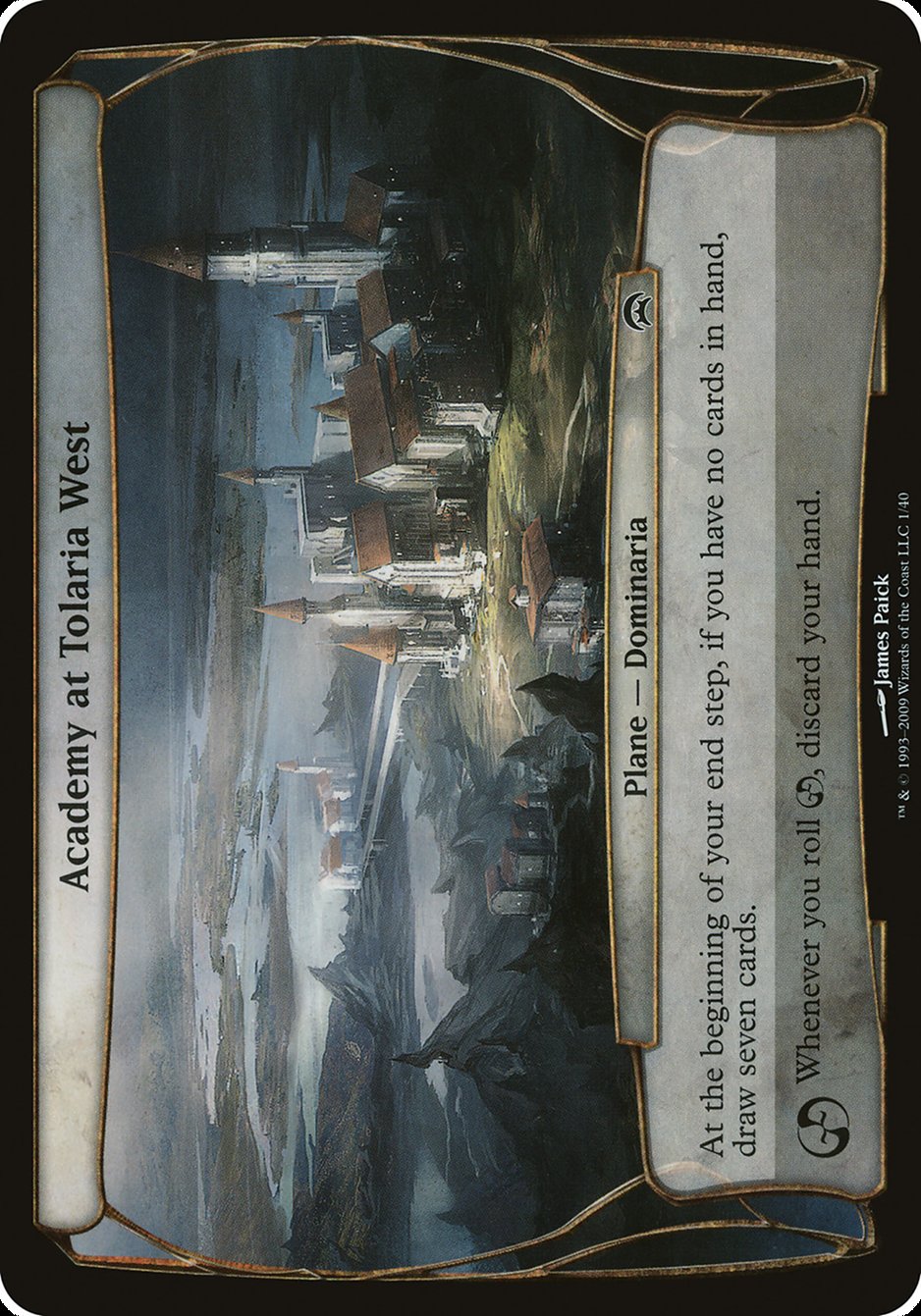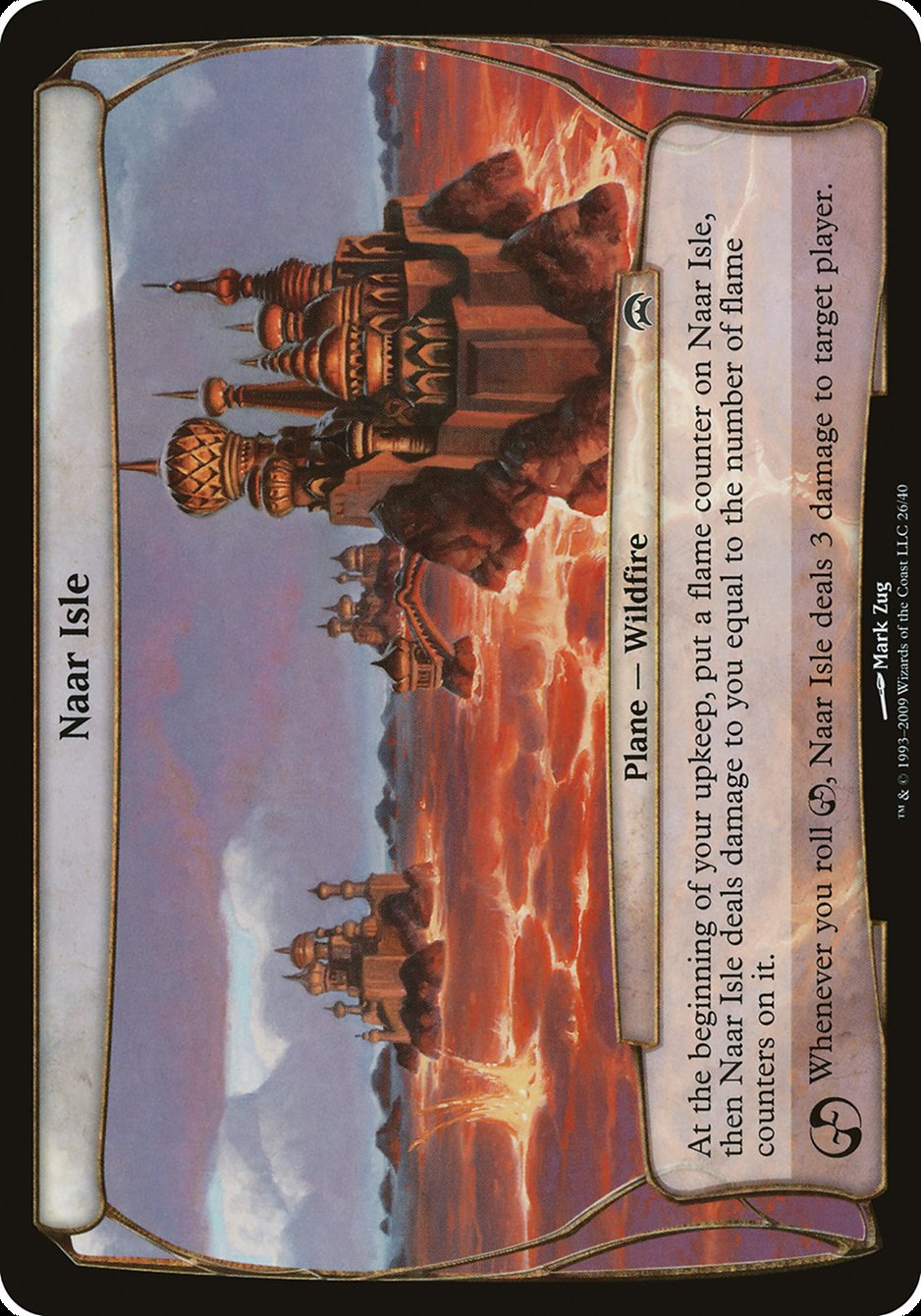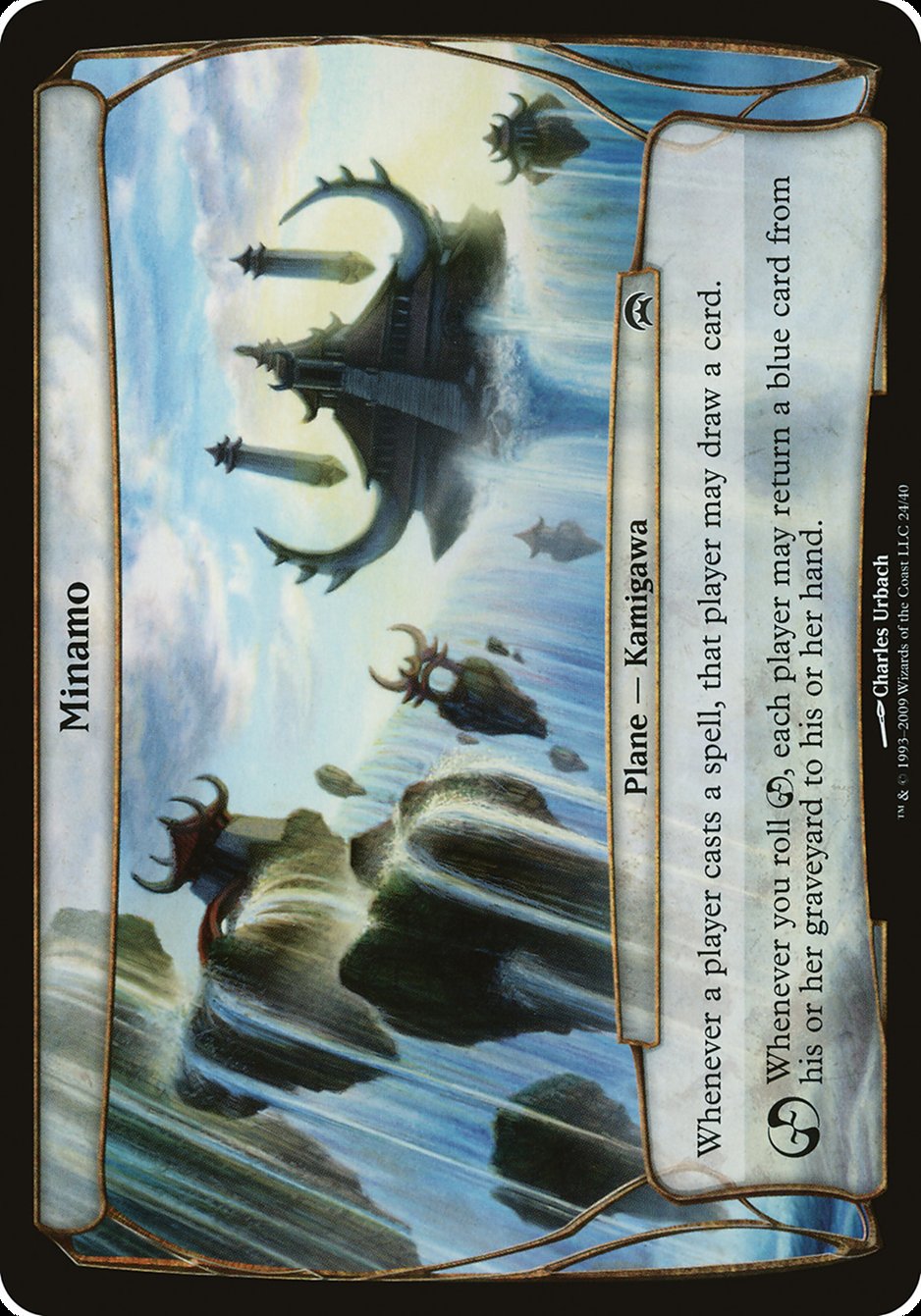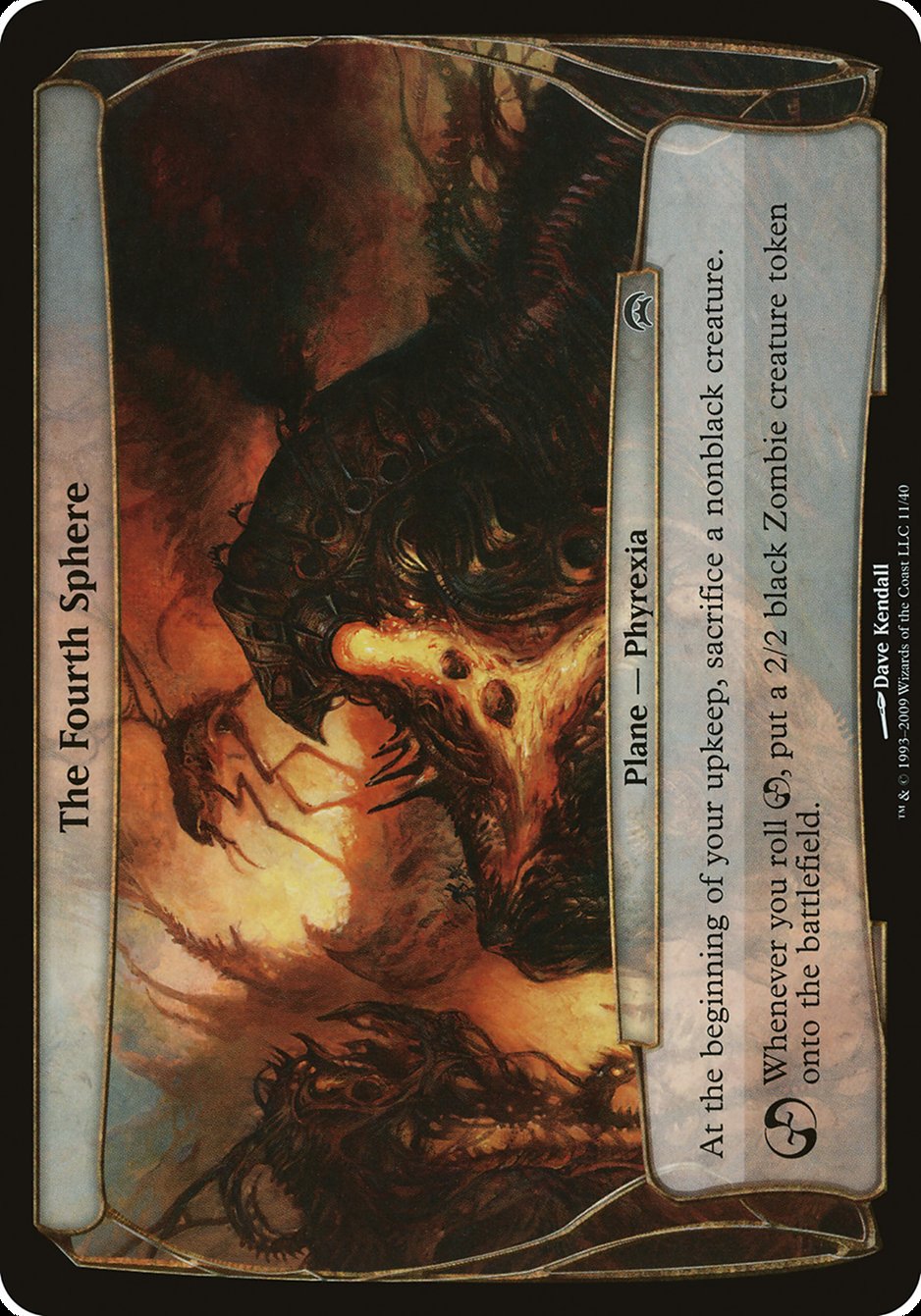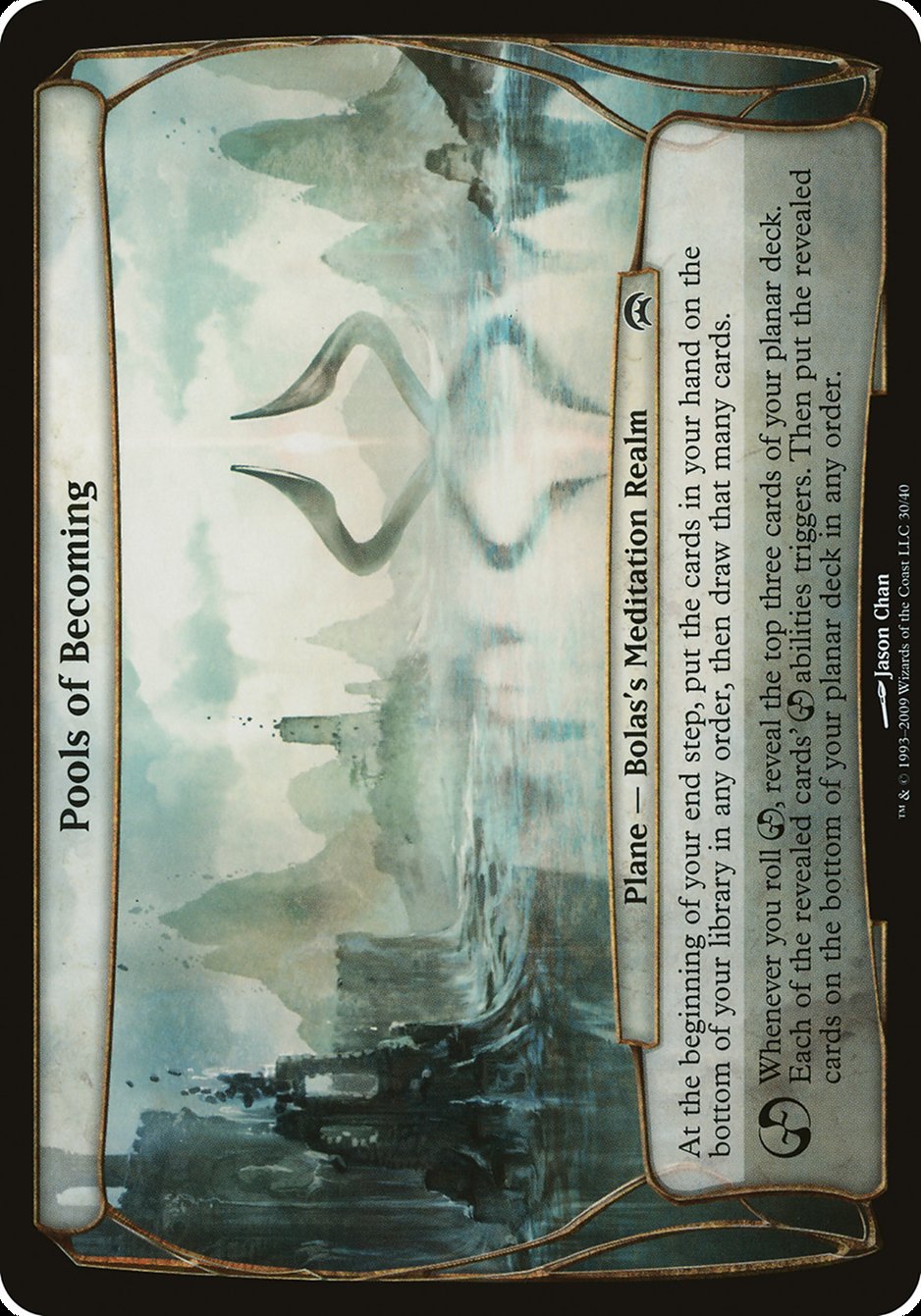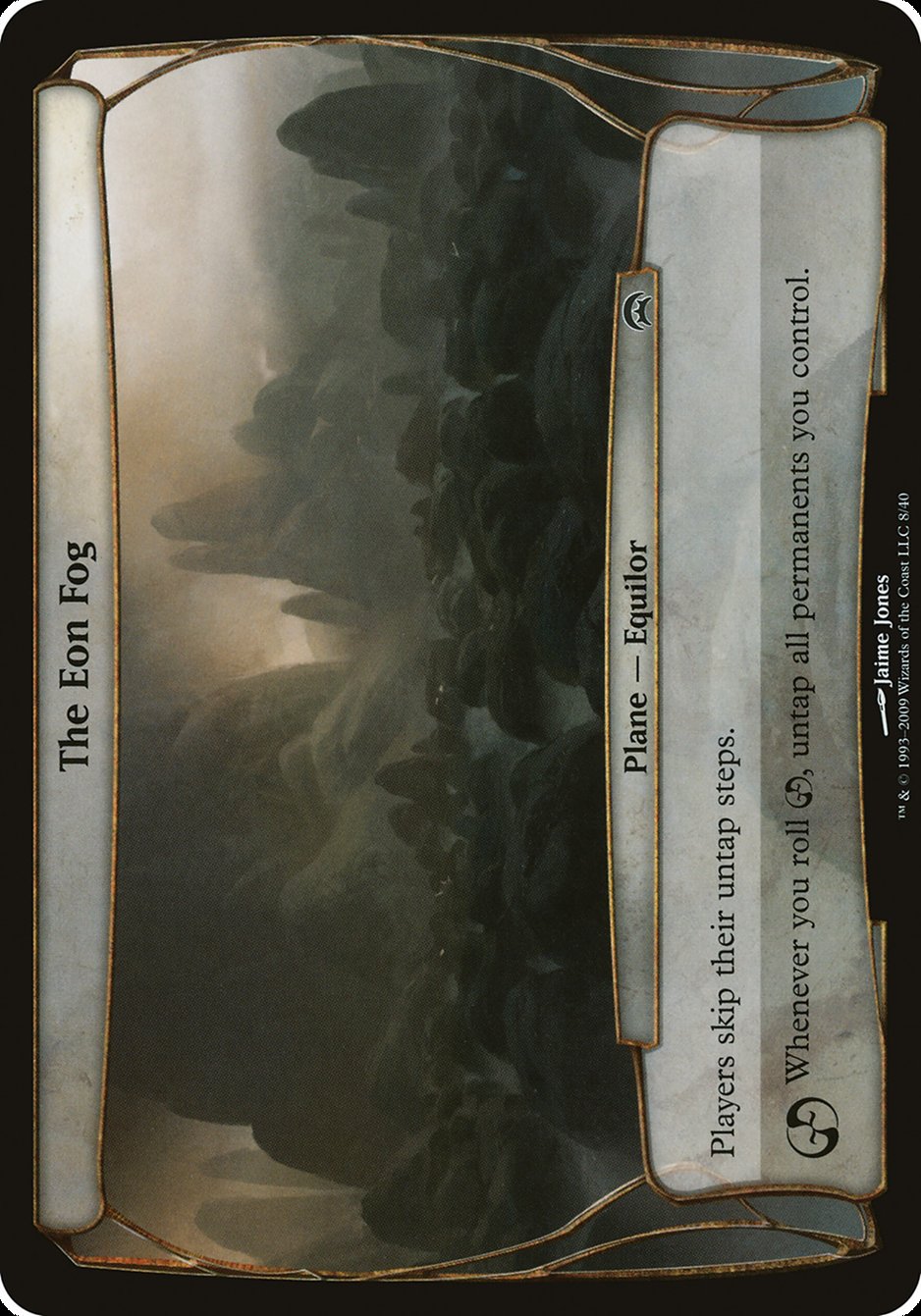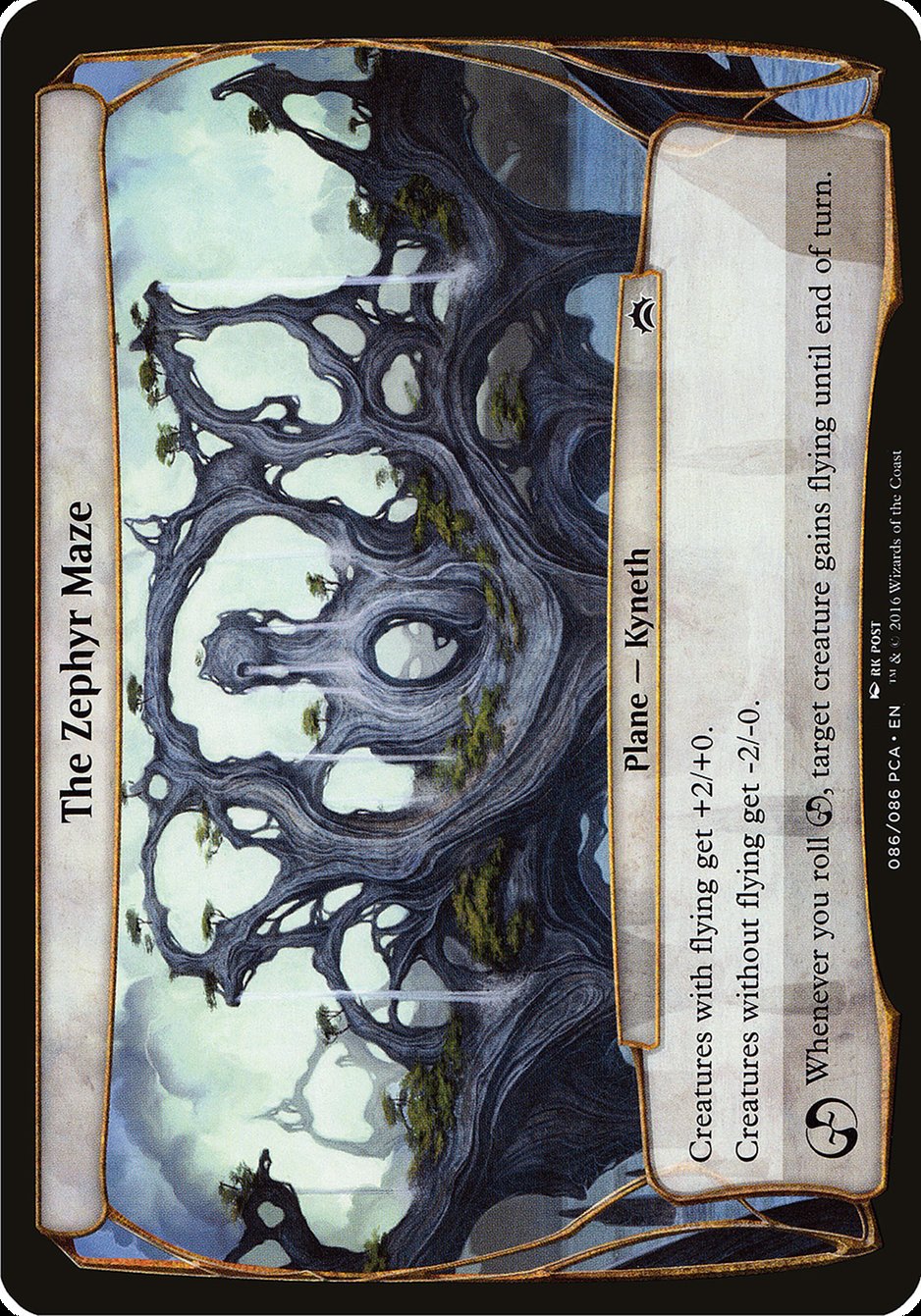Sea of Sand MTG Card
| Card sets | Released in 2 setsSee all |
| Rarity | Common |
| Type | Plane — Rabiah |
Text of card
Players reveal each card they draw. Whenever a player draws a land card, that player gains 3 life. Whenever a player draws a nonland card, that player loses 3 life. Whenever you roll chaos, put target permanent on top of its owner's library.
Cards like Sea of Sand
Sea of Sand is an intriguing Magic the Gathering card that evokes comparison with other land-related cards. Similar to the likes of Scorched Ruins, which doubles the mana output at the cost of sacrificing two lands, Sea of Sand also offers a unique mana boost. However, it emphasizes a long-term advantage, generating a continuous increase in mana without immediate sacrifice.
Also akin to Lotus Field, Sea of Sand demands a landscape shift on the board yet provides a steady mana gain as opposed to Lotus Field’s one-time large mana availability. The distinction lies in Sea of Sand’s ability to potentially support strategies that benefit from incremental value over time, rather than a quick burst of resources. Further, comparing it to Dust Bowl, which emphasis control through land destruction, Sea of Sand takes a different path by rewarding the player with a fortress of resources over offensive disruption.
Ultimately, Sea of Sand finds its niche within Magic the Gathering as a card that offers a more passive but steady development of mana capability, differing from the more immediate or aggressive alternatives in similar categories. It’s a strategic choice for players aiming to build dominance through gradual resource acceleration.
Cards similar to Sea of Sand by color, type and mana cost
Card Pros
Card Advantage: Sea of Sand offers the tactical edge of cycling, permitting players to replace it with a new card from their deck if it’s less advantageous at that moment. This versatility ensures your hand remains primed for the challenges ahead, and is a subtle way to outmaneuver opponents with a streamlined flow of resources.
Resource Acceleration: When you play Sea of Sand, you’re not just setting up for future turns; you’re also planting the seeds for resource acceleration. By ramping up your land count, you ensure that your mana base expands at an efficient pace, keeping you ahead in the race for mana dominance and enabling more significant, game-changing plays.
Instant Speed: Flexibility is key, and Sea of Sand can be played at instant speed, giving you the upper hand by allowing you to react to your opponent’s actions on their turn. This can be a game-changer, enabling surprise strategies or simply optimizing your own turns for maximum impact. It’s the kind of adaptability that keeps opponents guessing and gives you a firm control of the tempo.
Card Cons
Discard Requirement: Sea of Sand necessitates discarding another card to play, which can deplete your hand, leaving you at a disadvantage in the game’s later stages.
Specific Mana Cost: This card’s cost demands a precise combination of mana types, potentially complicating its inclusion in multicolored decks with tighter mana bases.
Comparatively High Mana Cost: With its mana cost falling on the higher end of the spectrum for its effects, players might find other cards that provide similar benefits with less investment.
Reasons to Include in Your Collection
Versatility: Sea of Sand is a unique card that adapts to various deck themes, enhancing strategies that revolve around landfall or desert-based synergies. Its ability to modify the battlefield texture provides subtle yet powerful effects on gameplay.
Combo Potential: This card can be a linchpin for numerous combos, especially in decks that capitalize on land recursion or sacrificing. Its interaction with cards that care about land types or number of deserts under your control can be game-changing.
Meta-Relevance: In environments where land-based strategies are prevalent, Sea of Sand can be a crucial addition. Whether disrupting your opponent’s mana base or bolstering your own land-play mechanics, its relevance is contingent on current deck trends and how they interact with land dynamics.
How to Beat
Dismantling the advantages of Sea of Sand requires a tactical approach in a game of MTG. Unlike other powerful artifacts, Sea of Sand uniquely disrupts deck mechanics by manipulating the top cards, a strategy that can be hard to counter without the right moves. To tilt the scales in your favor, consider utilizing artifact destruction cards like Nature’s Claim or Abrade to eliminate Sea of Sand from play swiftly and efficiently. Moreover, enlisting cards that offer library manipulation can help you regain control. Instant spells like Tormod’s Crypt also serve as a defense by exiling the graveyard, ensuring Sea of Sand’s cumulative abilities are stifled.
Remember, directly addressing Sea of Sand’s presence on the battlefield can prevent your opponent from gaining the upper hand. While the card’s ability to exile top cards could set up strategically game-winning combinations, having the right instant-speed answers in your deck enhances your resilience. Deck-building with a consideration for removal and counter-strategies solidifies your position, securing you against the Sea of Sand’s potential tactical sway in the MTG universe.
Where to buy
If you're looking to purchase Sea of Sand MTG card by a specific set like Planechase Planes and Planechase Anthology Planes, there are several reliable options to consider. One of the primary sources is your local game store, where you can often find booster packs, individual cards, and preconstructed decks from current and some past sets. They often offer the added benefit of a community where you can trade with other players.
For a broader inventory, particularly of older sets, online marketplaces like TCGPlayer, Card Kingdom and Card Market offer extensive selections and allow you to search for cards from specific sets. Larger e-commerce platforms like eBay and Amazon also have listings from various sellers, which can be a good place to look for sealed product and rare finds.
Additionally, Magic’s official site often has a store locator and retailer lists for finding Wizards of the Coast licensed products. Remember to check for authenticity and the condition of the cards when purchasing, especially from individual sellers on larger marketplaces.
Below is a list of some store websites where you can buy the Sea of Sand and other MTG cards:
 BUY NOW
BUY NOW BurnMana is an official partner of TCGPlayer
- eBay
- Card Kingdom
- Card Market
- Star City Games
- CoolStuffInc
- MTG Mint Card
- Hareruya
- Troll and Toad
- ABU Games
- Card Hoarder Magic Online
- MTGO Traders Magic Online
See MTG Products
Printings
The Sea of Sand Magic the Gathering card was released in 2 different sets between 2009-09-04 and 2018-12-25. Illustrated by Jim Nelson.
| # | Released | Name | Code | Symbol | Number | Frame | Layout | Border | Artist |
|---|---|---|---|---|---|---|---|---|---|
| 1 | 2009-09-04 | Planechase Planes | OHOP | 33 | 2003 | Planar | Black | Jim Nelson | |
| 2 | 2018-12-25 | Planechase Anthology Planes | OPCA | 68 | 2015 | Planar | Black | Jim Nelson |
Rules and information
The reference guide for Magic: The Gathering Sea of Sand card rulings provides official rulings, any errata issued, as well as a record of all the functional modifications that have occurred.
| Date | Text |
|---|---|
| 2009-10-01 | A face-up plane card that’s turned face down becomes a new object with no relation to its previous existence. In particular, it loses all counters it may have had. |
| 2009-10-01 | A plane card is treated as if its text box included “When you roll {PW}, put this card on the bottom of its owner’s planar deck face down, then move the top card of your planar deck off that planar deck and turn it face up.” This is called the “planeswalking ability.” |
| 2009-10-01 | If an ability of a plane refers to “you,” it’s referring to whoever the plane’s controller is at the time, not to the player that started the game with that plane card in their deck. Many abilities of plane cards affect all players, while many others affect only the planar controller, so read each ability carefully. |
| 2009-10-01 | The controller of a face-up plane card is the player designated as the “planar controller.” Normally, the planar controller is whoever the active player is. However, if the current planar controller would leave the game, instead the next player in turn order that wouldn’t leave the game becomes the planar controller, then the old planar controller leaves the game. The new planar controller retains that designation until they leave the game or a different player becomes the active player, whichever comes first. |
